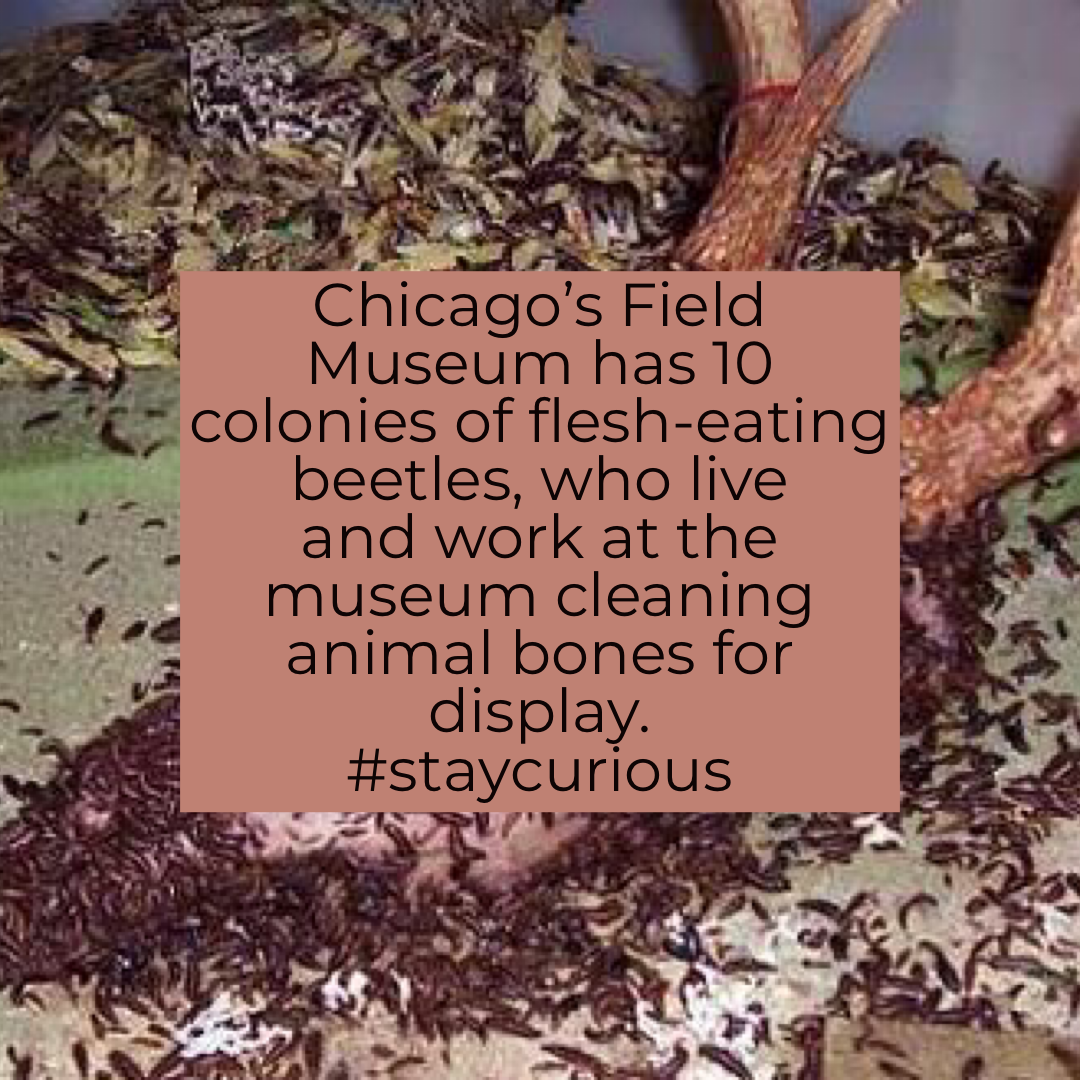Chicago's Field Museum has 10 colonies of flesh-eating beetles, who live and work at the museum cleaning animal bones for display.
Not long ago, the thing in the tank was a living animal—a bobcat that prowled and hunted the way bobcats do, and then eventually died. What’s in the tank doesn’t resemble a bobcat, though. It’s just a mass that looks a little bit like jerky meat still on the bone. And the bobcat isn't alone, either: Little black beetles and setae-studded larvae are swarming all over the meat, devouring it. Put an ear to the top of the tank, and you’ll hear something akin to the snap-crackle-pop of Rice Krispies just drenched in milk—the sound of thousands of dermestid beetles hard at work.
00:08
The bobcat is on its way to becoming an osteological specimen at Chicago’s Field Museum. Like most natural history museums around the world, the Field uses Dermestes maculatus, or hide beetles, to clean its specimens. The museum has 10 colonies, which live and work in aquaria around a third-floor room that’s closed off from the rest of the museum by two double doors. The specimens within the tanks are in various stages of cleanliness: One holds what appears to be a sloth arm, and in some, beetles and larvae hunt for meat on skeletons that are nearly picked clean.
Across the room, on a countertop next to the sink, carcasses stripped of their skin and excess musculature sit drying on racks and plastic trays. “The beetles like the meat a little bit dry,” explains research assistant Joshua Engel. He points to one—“this is a seagull”—then another: “This one might be beaver.” The scent of putrid meat hangs in the air. “You get used to it pretty quickly,” he says.
If the thought of beetles eating the meat off animal bones in an enclosed space turns your stomach, you’re not alone. But despite the ick factor, natural history museums are so indebted to the insects that they’ve been nicknamed “museum bugs.” And in fact, dermestid beetles have a number of advantages over other osteological prep methods: They eat the tissue from specimens in a fraction of the time (a colony can clean off a small rodent in just a few hours, a big bird like a seagull in a few days), are significantly less messy than other methods, and are much less harmful to the bones themselves. “We love them,” William Stanley, director of the Field Museum’s Gantz Family Collections Center, tells mental_floss. Dermestid beetles are, he says, the unsung heroes of natural history museums. As long as they don’t escape.
@Curionic
#staycurious






